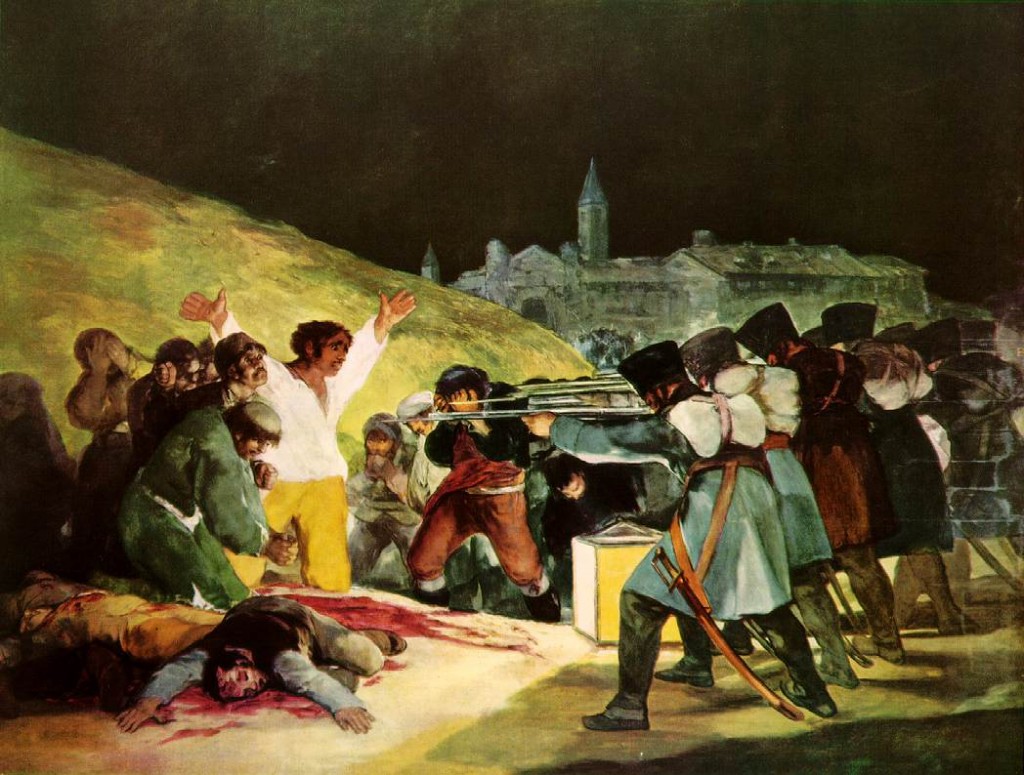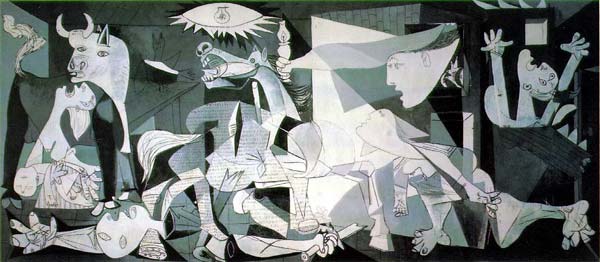History: Politics and Visual Culture
Throughout history, visual culture has played an important role in protest and social change. Although “high” art had long been used to venerate political figures as well as members of the upper classes, with the revolutionary tides of the 18th and 19th centuries in Europe and America, we see a shift and an increase in pictorial depictions of political resistance. These historical examples demonstrate the way visual culture has been fundamental to the politics of protest. They serve as witness and document. They can incite and instigate action. Certainly, the political power of the visual was not just limited to the domain of high art. As historian Lynn Hunt points out, political pornography in 18th century France “helped to bring about the Revolution by undermining the legitimacy of the ancien regime as a social and political system.” Less bawdy political cartoons have also played an important role.
Paintings such as Francisco de Goya’s “Third of May 1808” (1814) commemorate the underdog and depict the rage and pain of social struggle. This painting captures the victims of the Spanish resistance at the hands of Napoleon’s armies during their occupation of Spain.
Pablo Picasso’s “Guernica” (1937), another key example of the visual culture of resistance depicts the Spanish civil war and bombing of the town, Guernica, by German and Italian armies.
Next: Wall Street Protests and History





[…] Visual Culture of the Occupation. […]